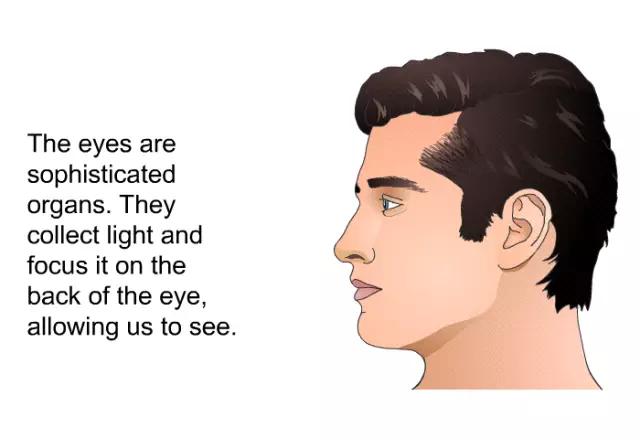- Author Rachel Wainwright [email protected].
- Public 2023-12-15 07:39.
- Last modified 2025-11-02 20:14.
Gene pool

What color should be the eyes or skin, what kind of reaction do these or those types of food cause, what should be the height, build, length of fingers, blood type? The answers to these and many other questions can be found in the information repository called the gene pool.
How genetic information is encoded and transmitted
Each biological species has its own set of chromosomes. Cats have 19 pairs of chromosomes, clover has 7, butterflies have 190, and humans have 23 pairs. One of them is the sex chromosomes, and although in fact the remaining 22 pairs of chromosomes are responsible for the preservation of genetic information, reproductive and recombinatory functions, this pair is responsible for evolution as such and is responsible for the changes that are made to the gene pool.
Chromosomes, in turn, are a sequence of genes separated by an intergenic space, which includes regulatory regions and DNA fragments that do not contain encoded information. Genes are unevenly located in chromosomes - there are areas rich and poor in genes, but scientists have not been able to find out the reasons for such a strange arrangement of hereditary information. Today, the human gene pool includes about 28 thousand genes, which is much more than that of simple organisms.
What information do the genes in the gene pool carry? Human chromosomes contain a huge list of information: eye color, skin type, shape and length of arms or legs, shape of nails, blood type, susceptibility to diseases, dietary habits, etc. All these are external and internal characteristics that can manifest themselves in this, in the next or in several generations. It is believed that temperament also refers to hereditary information included in the gene pool, but for modern scientists this remains a controversial issue.
With age and under the influence of unfavorable factors, genes can change, undergo so-called breakdowns, and then the future offspring can develop chromosomal diseases - Down syndrome, Shershevsky-Turner, Kleinferter, etc. And the older the parents are, the higher the likelihood of violations in the body of the unborn child. Therefore, today the issue of preserving the gene pool has become relevant.
Human genome, genotype and gene pool
In genetics, there are three concepts associated with the transmission and preservation of genetic information - the genome, genotype, and human gene pool. What are their similarities and differences?
The human genome is the totality of all the genes of the human body inherent in it as a biological species Homo sapiens. The term "genome" appeared in 1920, it was proposed by Hans Winkler to describe the set of genes inherent in a biological species. Today, when knowledge about DNA has undergone major changes, the human genome means the total DNA of a haploid set of chromosomes and each of the extrachromsomal genetic elements that are contained in an individual cell of the germ line of a multicellular organism.
The human genotype is a set of genes that are inherent in a specific individual, and not the entire species as a whole or a specific population, as is the case with the human gene pool. If “genome” includes the concept of non-coding DNA regions, then it is not included in the concept of “genotype”.
Gene pool is a term that was first proposed by the Russian geneticist A. S. Sebryakovsky in 1928. Today, the human gene pool means the totality of genes of the general population of the species Homo sapiens. It, in turn, has about 6 billion representatives, which are subdivided into races, nations, peoples and nationalities and ethnic groups.
The human gene pool is characterized by:
- Genotype heterogeneity;
- Dependence on the gene pool of predecessors;
- Genetic integrity.
In addition, we also have the so-called genetic burden of hereditary pathologies associated with increased morbidity and a short life expectancy, which determines natural selection.
Gene pool change
Human activity makes changes in the quality of the environment, and most of the changes are negative and lead to a reduction in life expectancy and an increase in the incidence rate. Some of them do not lead to premature death, but reduce the quality of life. Be that as it may, but scientists are talking about a gradual change in the gene pool on the entire planet.
The formation of the human gene pool followed a long evolution, and its result was the adaptation of human populations to the prevailing natural conditions. The dissimilarity of the gene pools of different populations is due to the accumulation of genes that allow their carriers to better adapt to environmental conditions. For example, the inhabitants of low latitudes have acquired a dark skin color, and with it - resistance to ultraviolet radiation. At the same time, there is a process of natural changes in the gene pool associated with mutations and gene drift, natural selection.

Is it always worth considering a change in the gene pool as a negative phenomenon? In fact, defects created on a personal level are often compensated by special abilities developed in the course of life, for example, many legendary poets, soothsayers and singers of ancient Greece were blind, for example, Homer is considered such. Therefore, it is quite logical that people strive to preserve the gene pool in its original state, the way nature intended it.
But today, although the world's population is constantly growing, scientists note with concern that a person loses his natural qualities and his gene pool does not improve. The problem of preserving the gene pool is especially acute in the fact that many modern women cannot conceive, bear or raise a child. All this leads to the idea of how fragile and complex the biological nature of man is. Perhaps someday scientists will find a way to combat genetic diseases and abnormalities that lead to infertility. But until then, the preservation of the human gene pool remains one of the most important modern tasks for science.
Found a mistake in the text? Select it and press Ctrl + Enter.






